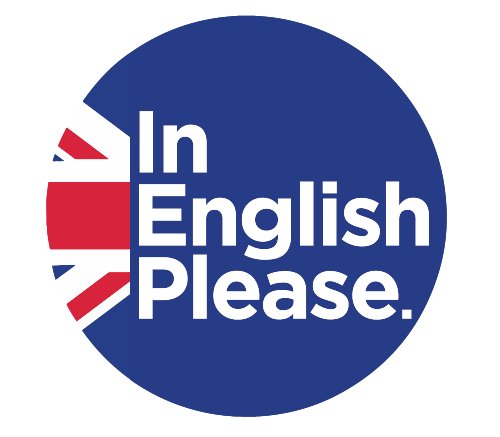
Lee en inglés B1: Why Some Countries Drive on the Left and Others on the Right?
¿Alguna vez te has preguntado por qué se conduce por la izquierda o por la derecha? En este Reading para nivel intermedio B1 podrás ver que es un tema muy curioso que además viene de lejos en el tiempo. Si tienes dudas de tu nivel de inglés haz nuestro test de inglés gratis y sal de dudas.
En este artículo vamos a practicar:
Vocabulario nuevo
Reading Nivel intermedio B1
Writing: responde preguntas
Antes de pasar a leer, vamos a ver estas palabras que aparecen en el texto que quizás no conozcas:
📝 Vocabulario:
Right-handed: diestro
Conversely: Por el contrario (creíste que era algo de conversar? has caído en un false friend! Mira estos false friends para evitar caer en la trampa
Spread across: repartidos por
Switch: cambio
Carriages: carruaje
Enhancing: del verbo enhance, significa mejorar
Blend: mezcla
Si quieres impulsar aún más tu nivel de inglés, pregúntanos, tenemos el profesor particular que se ajusta a tus necesidades.
Why Some Countries Drive on the Left and Others on the Right
Have you ever wondered why some countries drive on the left side of the road while others stick to the right? The answer lies in a mix of historical traditions, cultural practices, and practical decisions.
Historical Roots:
The practice of driving on the left dates back to medieval times. Most people are right-handed, so riding on the left side of the road allowed knights and travelers to keep their dominant hand free to greet others or draw their swords against potential threats. This tradition was formalized in Britain in 1773 and spread to its colonies, which is why many countries that were once part of the British Empire still drive on the left.
Napoleon’s Influence:
Conversely, the right-side driving rule became prominent in Europe thanks to Napoleon Bonaparte. Napoleon, a left-hander, ordered his armies to march on the right to keep their dominant hands free. As his empire expanded, this practice spread across many European countries.
American Adoption:
In the United States, the switch to right-side driving was influenced by the design of wagons and carriages. Drivers sat on the left to better judge passing distances and avoid collisions. As the automobile industry grew, this convention stuck and became the standard.
Modern Changes:
Countries have sometimes switched sides for practical reasons. Sweden famously changed from left to right in 1967 to match its neighboring countries, enhancing road safety and trade efficiency. Similarly, Samoa switched to left-side driving in 2009 to align with Australia and New Zealand, its major trading partners.
The Cost of Change:
Changing the side of the road is an expensive and complex process, involving alterations to road signs, traffic lights, and driver habits. This is why many countries retain their traditional driving side, despite the global standardization trend.
Understanding these reasons reveals a fascinating blend of history, culture, and practicality behind something as routine as driving.
Practica respondiendo a estas preguntas
¿Qué te ha parecido la lectura? Ahora te animo a que respondas estas preguntas sobre el texto en inglés.
- Why did people historically drive on the left side of the road in medieval times?
- When was the left-side driving tradition formalized in Britain?
- How did Napoleon Bonaparte influence the practice of right-side driving in Europe?
- What practical reason caused Sweden to switch from left-side to right-side driving in 1967?
- Why do many countries retain their traditional driving side despite a trend toward global standardization?
¡Continúa leyendo! Mira nuestra lista de recomendaciones de libros en inglés que hemos seleccionado pensando en qué libros pueden ser guays para leer este verano o esta otra lectura para nivel intermedio que te ayudará a organizar mejor tu tiempo.
¿Estás pensando en dar clases con un profesor particular de inglés? Cuéntanos qué necesitas, te escuchamos.
By the way, no solo somos buenos profesores de inglés sino también somos buenos estudiantes de español. Si ves un fallo en nuestro articulo, abajo nos puedes dejar un comentario con la corrección y la revisamos.
Posts Relacionados
Practica las preposiciones en inglés: guía rápida con ejercicios
Preposiciones en inglés ¿cuáles son? Las preposiciones en inglés son palabras pequeñas pero poderosas que indican la relación entre diferentes elementos en una oración. Estas relaciones pueden referirse a lugar, tiempo, dirección, causa, medio o modo. Es cierto que al...
Aprende 3 modales en inglés B1: Should, Would y Could – ejercicios PDF
Aprende a usar los verbos modales en inglés B1 Hablar correctamente en inglés no solo se trata de aprender vocabulario y estructuras (pero si quieres aquí te dejo algunos artículos para refrescar este contenido como Ejercicios de sinónimos y antónimos en ingles –...
It is done: Ejemplos de pasiva en inglés B2 y C1 – Avanzado
Ejemplos de pasiva en inglés B2 En un nivel B2, pasar de activa a pasiva requiere un conocimiento de gramática más avanzado, así que hemos preparado ejemplos de pasiva en inglés B2, para que te hagas una idea. También te invitamos a que eches un vistazo a nuestro...









